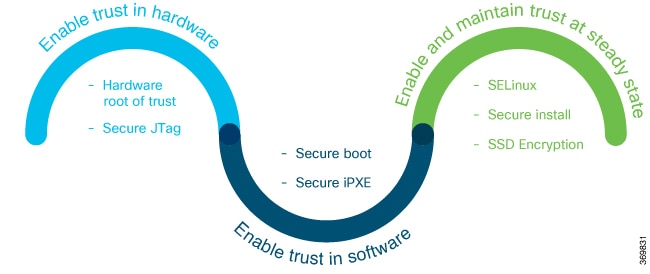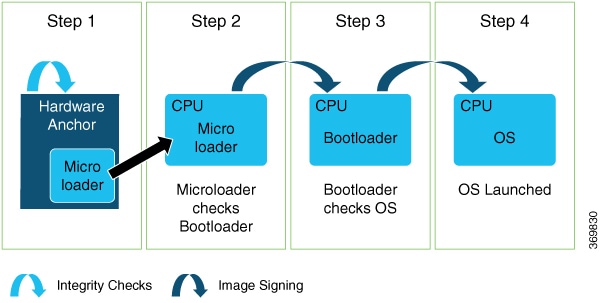Need for Trustworthy Systems
Global service providers, enterprises, and government networks rely on the unimpeded operation of complex computing and communications networks. The integrity of the data and IT infrastructure is foundational to maintaining the security of these networks and user trust. With the evolution to anywhere, anytime access to personal data, users expect the same level of access and security on every network. The threat landscape is also changing, with adversaries becoming more aggressive. Protecting networks from attacks by malevolent actors and from counterfeit and tampered products becomes even more crucial.
Routers are the critical components of the network infrastructure and must be able to protect the network and report on system integrity. A “trustworthy solution” is one that does what it is expected to do in a verifiable way. Building trustworthy solutions requires that security is a primary design consideration. Routers that constitute trustworthy systems are a function of security, and trust is about preventing as well as knowing whether systems have been tampered with.
In trustworthy systems, trust starts at the lowest levels of hardware and is carried through the boot process, into the operating system (OS) kernel, and finally into runtime in the OS.
The main components of implementing a trustworthy system are:
-
Enabling trust in hardware with Hardware root-of-trust and secure JTag
-
Enabling trust in software with secure boot and secure iPXE
-
Enabling and maintaining trust at steady state with SELinux, Secure install, and SSD Encryption

Trustworthy systems must have methods to securely measure hardware, firmware, and software components and to securely attest to these secure measurements.
For information on key concepts used in this chapter, see the Understanding Key Concepts in Security.


 Feedback
Feedback